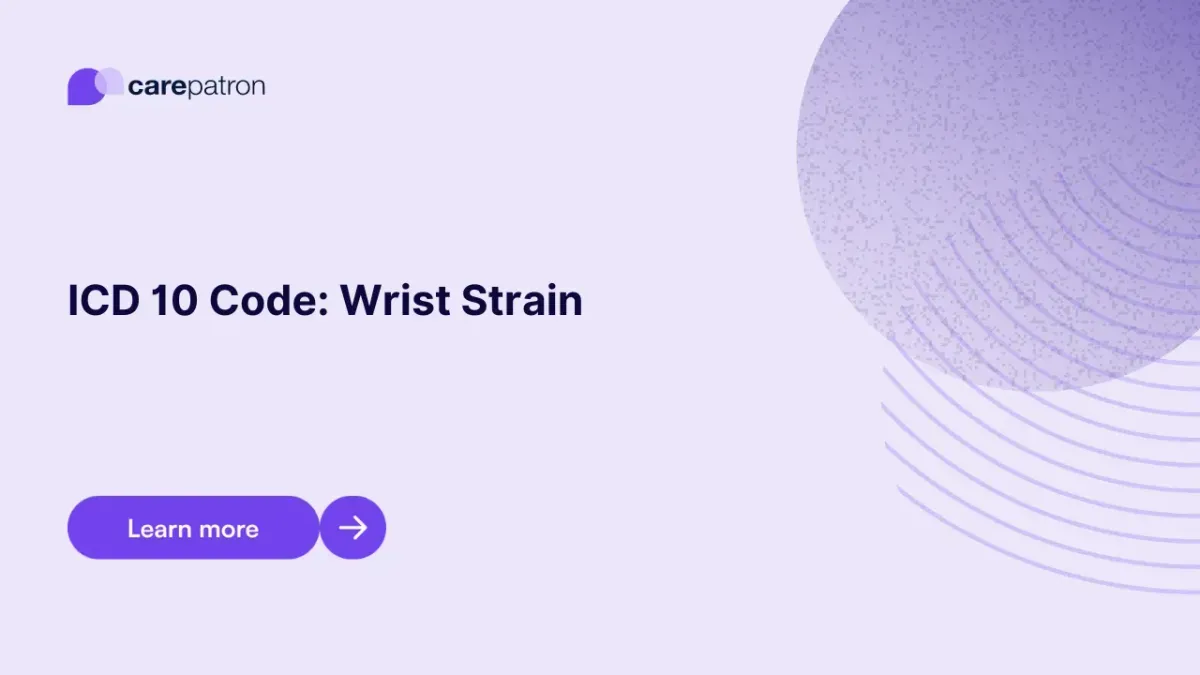
Wrist Strain ICD-10-CM Codes
Explore ICD-10-CM codes for wrist strain, including right, left, and unspecified injuries. Learn symptoms, treatment, and billing for all encounter types.
Use Code
Commonly asked questions
You can prevent wrist strains by using proper ergonomics during work or physical activity and performing regular stretching and strengthening exercises. Wearing wrist supports during repetitive tasks and avoiding sudden, forceful wrist movements can also help protect the joint and ligaments.
Seek medical attention if you experience severe pain, swelling, numbness, or limited wrist movement that doesn't improve with rest and self-care. It's also important to check if the injury involves a popping sound or if you can't bear weight on the wrist.
Wrist strains are typically treated with rest, ice, compression, elevation (RICE), over-the-counter pain relievers, and possibly a wrist splint. In more severe cases, physical therapy or surgery may be needed to repair damaged tendons or ligaments.
EHR and practice management software
Get started for free
*No credit card required
Free
$0/usd
Unlimited clients
Telehealth
1GB of storage
Client portal text
Automated billing and online payments
